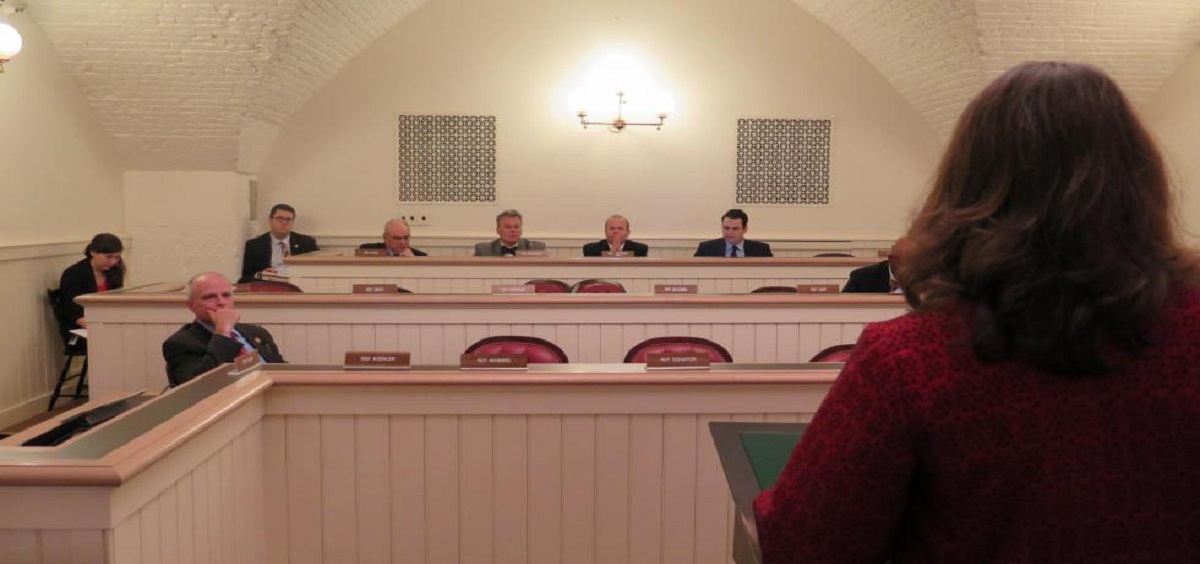News

Ohio Diplomas to Acknowledge Student Language Achievement
By: Michelle Faust | StateImpact Ohio
Posted on:
Just a week before her May 2016 graduation from Hudson High School, Kathleen Greer stood at the lectern in front the Ohio House Education Committee extolling her love for the German language and detailing her background and effort to learn it. Most of Greer’s testimony was presented to the committee in German. Other students followed her with testimony in Spanish and in French.
That was in May. Now, their testimony translates to law. In March 2017, the Ohio State Seal of Biliteracy goes into effect.
“The Ohio foreign language community is just elated that this was passed, that this is going to become real, and that we will be able to recognize that students are studying or have attained proficiency in 2 or more languages,” says Martha Esperanza Castañeda, Associate Professor of Foreign Language Education at Miami University.
Sarah LaTourette, Republican state representative from Chesterland, says she got the idea to co-sponsor House Bill 487 from a constituent. (The bill was eventually added to Senate Bill 3 before it was passed this December.)
The Spanish teacher came to LaTourette who wanted something to recognize “kids who are truly exceptional in this skill.”
“But there wasn’t really a way for them to show it,” says LaTourette. “It wasn’t going to take a lot of work to bring it to Ohio, and it became very clear to me the difference that it could make in these kids’ lives.”
The difference, as LaTourette and supporters see it, is a boost to add to college applications or a special skill to show to employers.
But what exactly will it mean to have this special seal on your high school transcript?
That will be up to the Ohio State Board of Education to decide. The governing body still has to establish the requirements, but Castañeda recommends students show linguistic proficiency at an intermediate high or advanced low level.
American Council on the Teaching of Foreign Languages sets those levels, based on what students can do in the language.
“That’s what we want our students to be able to do: to be able to narrate in paragraph length discourse, to be able to resolve a problem, —let’s say if they’re in the business school or if they’re coming to university, and they want to do some critical thinking with a language— that that they’re able to solve the problem, that they’re able to tell stories in the past, and they’re able to give their opinion,” explains Castañeda.
That’s similar to what the 23 other states and the District of Columbia require for their state seal of biliteracy.
Kathleen Greer is now double majoring in German and History at the Ohio State University.
The Seal of Biliteracy comes too late for her high school transcript, but the 19-year-old is looking forward. “I really want to look out for future students,” she says.
Greer sees the seal as an incentive for future students to study languages.
“It’s really amazing what a little sticker on a transcript can do to motivate a student to go out and learn a foreign language,” says Greer.
The way she sees it, speaking more than one language is a 21st-century skill people of her generation will need for the global workforce. But her ideals go further.
“I think we can increase respect for Americans abroad if we learn their languages and if we try to connect with them on another level,” she says.
Whether this view comes from youthful idealism, a goal for the future, or both, if the seal does convince more American kids to study language, Greer may benefit eventually. After she graduates from OSU, Greer plans to teach English and social studies in Germany, and ultimately, return to the U.S. to teach German.
“I very much believe in teaching bilingual skills to American students. They’ve pretty much got it down over there,” says the future educator.

